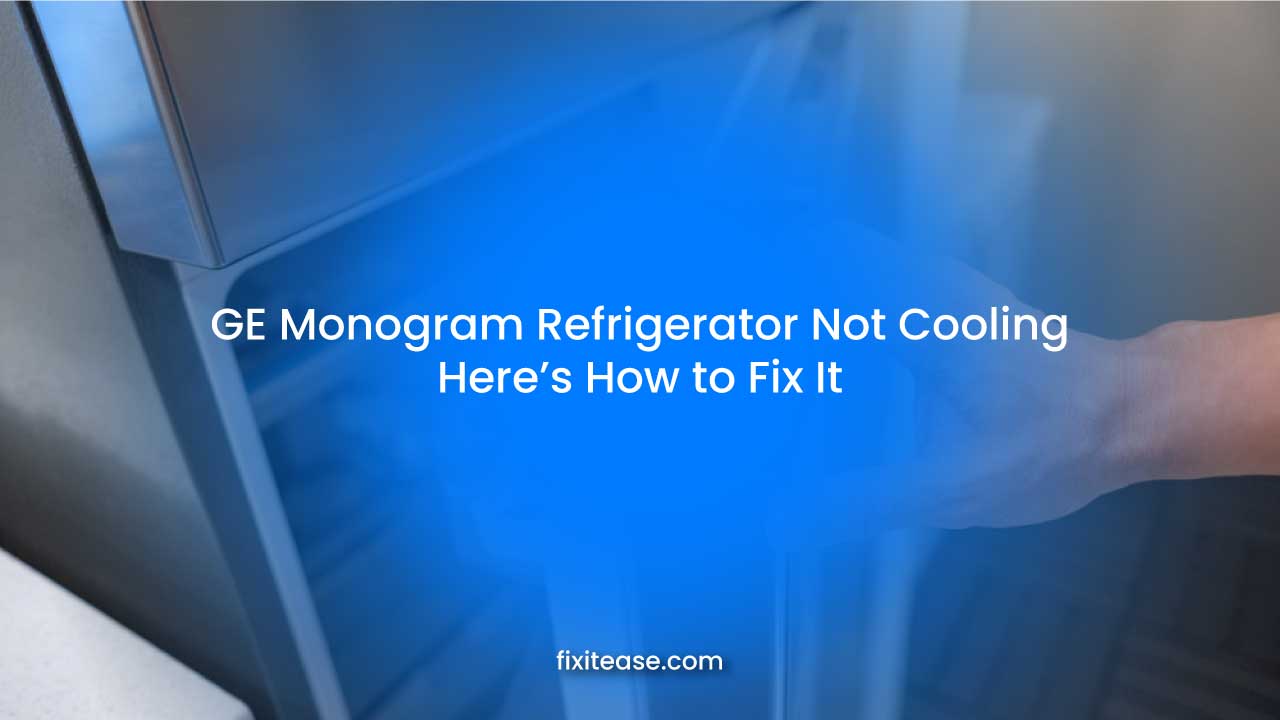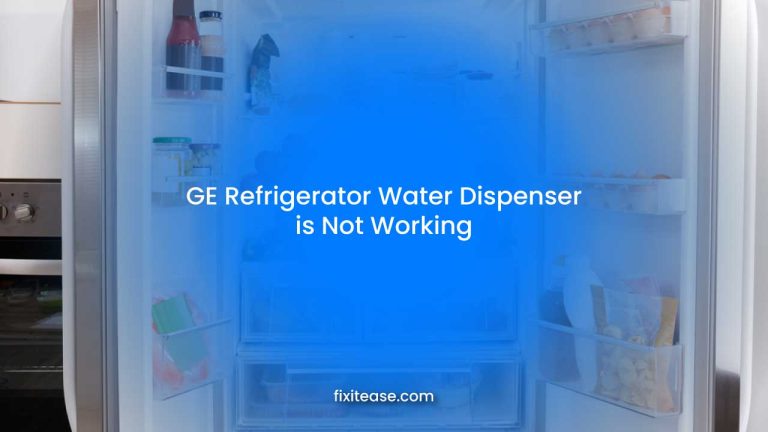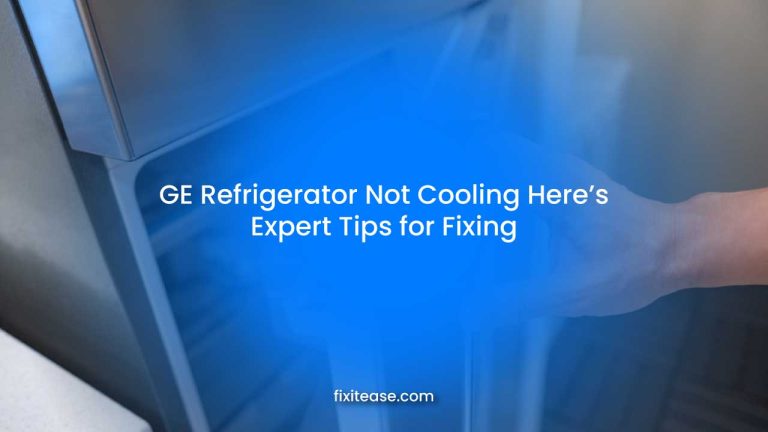GE Monogram Refrigerator Not Cooling? Here’s How to Fix It
A refrigerator is a vital appliance in any home, as it keeps our food fresh and safe to eat. However, when it starts to malfunction, especially when it stops cooling properly, it can be frustrating and concerning.
If you’re dealing with issues in your GE Monogram refrigerator, you’re not alone. Many face similar problems, and we’re here to help.
This guide explores the reasons behind cooling troubles, provides solutions, answers common questions, and ensures you can get your fridge back to its best.
Why is Your GE Monogram Refrigerator Not Cooling?

To address the cooling issue in your GE Monogram refrigerator, we must first pinpoint the root cause. There are various potential reasons behind your refrigerator not cooling properly.
Let’s have a look at some potential issues with their exact reason and then we can solve the issues in detail.
| Potential Issue | Description of Issue |
| Thermostat Settings | Ensure it’s set to 37°F (3°C) for the fridge. |
| Dirty Condenser Coils | Clean under/behind the fridge for better cooling. |
| Blocked Internal Vents | Check for blockages affecting airflow. |
| Faulty Evaporator Fan | Ensure the freezer fan is running. |
| Damaged Gaskets | Inspect and replace damaged door gaskets. |
| Refrigerant Leak | Seek professional help for leaks. |
| Compressor Issues | Call a technician for fridge compressor problems. |
| Power Supply Problems | Check for loose cords and tripped breakers. |
How To Overcome GE Monogram Refrigerator Not Cooling Problem?
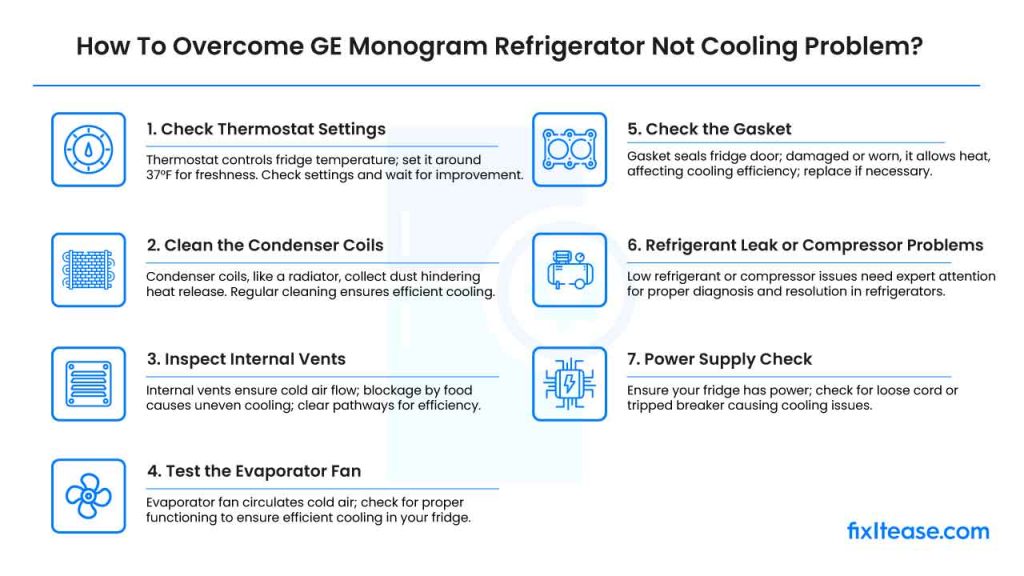
After identifying potential reasons behind your GE Monogram refrigerator’s cooling problem, its time to dive into a step-by-step troubleshooting guide to help you diagnose and, in some cases, resolve the issue:
Step 1: Check Thermostat Settings
The thermostat acts as the temperature controller for your fridge. It’s like a remote control for keeping your food cold.
If your refrigerator isn’t cooling properly, the first thing you should do is check the thermostat settings. Make sure it’s set to around 37°F (3°C) for the refrigerator compartment.
That’s the sweet spot for keeping your food fresh. Give it a few hours to see if things start getting chilly again. If not, there are a few things to keep in mind:
Solution: Sometimes, it’s not the thermostat itself but the door. If the refrigerator door isn’t closing properly, it can let warm air in and affect the temperature. Make sure the door seals tightly when you close it. If it doesn’t, it might need some adjustments or repairs.
Step 2: Clean the Condenser Coils
Think of the condenser coils as your fridge’s radiator. Over time, they can collect a layer of dust and grime. When they’re dirty, they can’t release heat properly, and that makes it harder for your fridge to stay cool. To clean them:
Solution: Unplug the refrigerator first to ensure safety. Then, gently clean the coils with a brush or a vacuum cleaner. Make sure you do this regularly, at least once a year, to maintain optimal cooling performance.
Step 3: Inspect Internal Vents
Inside your fridge, there are pathways for cold air to flow. These are the internal vents. Sometimes, they can get blocked by food items or containers. If they’re blocked, cold air can’t circulate as it should, leading to uneven cooling.
Solution: Simply take a look inside both the freezer and refrigerator compartments. If you see anything blocking these vents, remove them to ensure proper airflow.
Step 4: Test the Evaporator Fan
The evaporator fan is like the air circulator of your refrigerator. It’s responsible for moving the cold air from the freezer to the fridge section. To see if it’s working correctly:
Solution: Listen carefully when you open the freezer. If you don’t hear the fan running, it might need to be replaced. The evaporator fan is vital for maintaining even temperatures throughout your fridge.
Step 5: Check the Gasket
The gasket is the rubbery seal that goes around your refrigerator door. It’s like a protective barrier against warm air. But if it’s damaged or worn out, it can let heat sneak in.
Solution: If you notice any visible damage to the gasket or signs of wear, it’s a good idea to replace it. A healthy gasket ensures that your fridge door seals properly, keeping the cool air in and the warm air out.
Step 6: Refrigerant Leak or Compressor Problems
If you suspect that your refrigerator is low on refrigerant or the compressor, which is the heart of your fridge, isn’t working properly, these are more complicated issues that require expert attention.
Tip: Regularly defrosting your refrigerator can prevent frost build-up, which can obstruct the air circulation and make your fridge work harder.
Step 7: Power Supply Check
It might sound simple, but it’s essential to ensure your refrigerator is getting the power it needs. Sometimes, a loose power cord or a tripped circuit breaker can be the cause of cooling problems.
How can I optimize the cooling performance in my refrigerator?
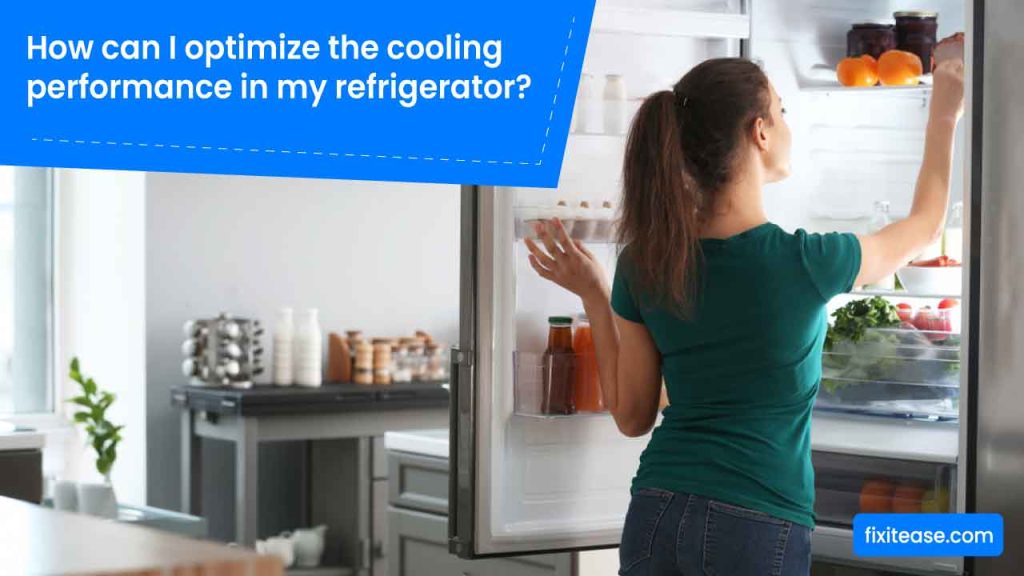
Optimizing your refrigerator’s cooling performance involves a few simple but crucial steps. Start by ensuring that the refrigerator door seals tightly, maintaining the desired cold temperature inside.
Regularly inspect the refrigerator for any damage or wear and promptly address any issues you find to prevent further cooling problems.
In case you encounter a problem that’s beyond your own DIY capabilities, especially when dealing with complex components like the compressor or refrigerant, don’t hesitate to reach out to a qualified technician.
They possess the expertise and necessary tools for handling more intricate repairs.
FAQ: Common Questions
How often should I clean the condenser coils of my refrigerator?
Cleaning the condenser coils is an essential maintenance task. It’s a good practice to clean them at least once a year. Regular cleaning ensures that your refrigerator maintains proper cooling and energy efficiency.
However, if you have pets or live in a dusty environment, consider cleaning the coils more frequently, perhaps every six months, to prevent dust and debris buildup, which can impede the cooling process.
Can I replace the gasket myself?
Yes, replacing the gasket is a task that you can usually handle yourself. Most replacement gaskets come with clear installation instructions. It’s a relatively straightforward DIY task, and it can help maintain a proper seal on the refrigerator door, preventing warm air from seeping in.
However, if you’re unsure about the replacement process or face any difficulties, it’s a good idea to seek professional help to ensure the job is done correctly, as a well-sealed gasket is crucial for optimal cooling.
How can I tell if my compressor is failing?
Compressor issues are often signaled by specific symptoms. These include a clicking sound, the compressor frequently cycling on and off, or warm temperatures inside the refrigerator even when it’s set to a low temperature.
If you notice any of these signs or suspect a problem with the compressor, it’s best to consult a professional technician. Compressor problems can be complex, and diagnosing and fixing them typically requires specialized knowledge and tools.
Why is the freezer working, but the refrigerator isn’t?
When your freezer is functioning correctly, but the refrigerator isn’t cooling as it should, it could be due to a couple of common issues. One possibility is that there’s a blocked vent that connects the freezer and refrigerator compartments.
If this vent is obstructed, it can disrupt the flow of cold air from the freezer to the fridge. Another potential problem is a malfunctioning evaporator fan, which is responsible for circulating cold air. If it’s not working correctly, it can lead to uneven cooling.
To address these issues, you can refer to the troubleshooting guide for step-by-step solutions to these common cooling problems.
Sum Up:
In conclusion, when your GE Monogram refrigerator isn’t cooling properly, it can be due to various factors, like a malfunctioning door seal, dirty coils, or a faulty evaporator fan. While you can troubleshoot some issues yourself using this guide, complex problems like refrigerant leaks or compressor malfunctions should be addressed by professionals. Regular maintenance can extend your appliance’s lifespan and save on energy costs.
So, if your GE Monogram refrigerator has cooling problems, use this guide to find the issue and ensure your food stays fresh while maintaining appliance efficiency.

